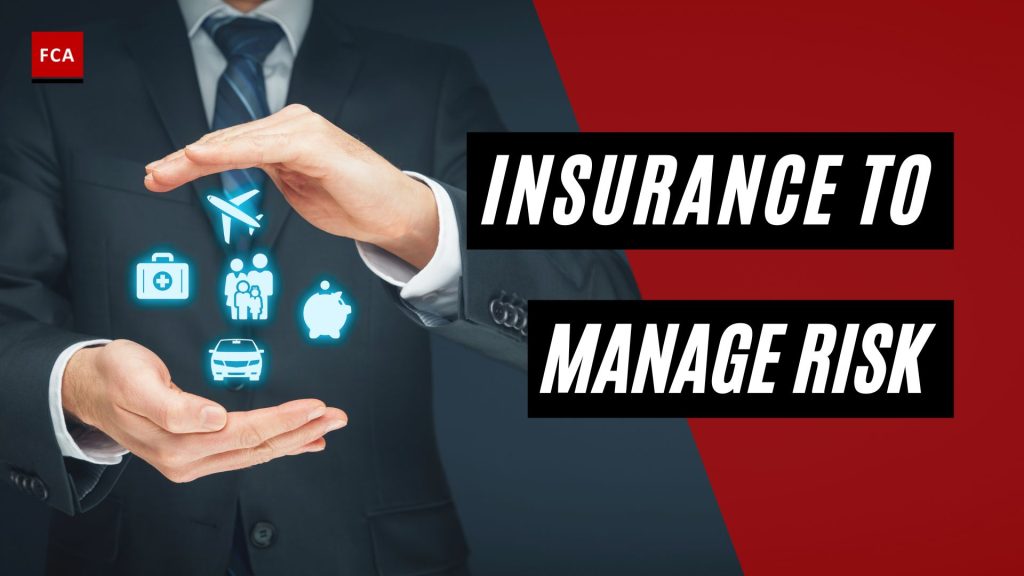Insurance can be a vehicle to manage risk. After performing the risk assessment, including the development and application of controls, the management identifies risks outside the risk appetite and tolerance levels. These risks are considered critical and may lead to business closure or an extreme level of negative impact on the profitability and reputation of the organization.
In such cases, the management may decide to transfer the risks to the third party which provides services that contribute to the risk minimization impacts. Insurance companies usually provide these third-party services.
Organizations prepare their internal risk, and insurance policies and procedures, where critical functions, assets, and technologies are insured, and the process of obtaining the insurance is laid down in those policies and procedures. Such arrangements may enable the organization to minimize the impact of risk incidents if they happen.

Insurance as a Contractual Arrangement
Risk transfer is a risk management and control strategy that requires the contractual transfer of potential risks to a third party. Insurance is a contractual arrangement between the insurance company and the organization, where the insurance company enters into a risk transfer arrangement with the organization for particular assets. The insurance company acts as the insurer, and the organization whose assets are insured is the insured.
Organizations are exposed to different risks for which decisions should be taken regarding the retention and transfer of risks. In case the organization has developed robust internal controls to mitigate the risks. The risks may not be transferred to another third party. Still, if the risks are of such a type where transferring them to another party is necessary, then organizations may consider transferring the risks. An example of transferring financial risks related to asset damage is to get all the assets insured by the insurance company.
Risk transfer requires appropriate risk assessment because the management may take appropriate decisions regarding the assets that need to be insured based on risk assessment.
Organizations transfer enterprise risks by entering into Insurance arrangements. The cash management function of the company may be insured so that if the enterprise occurs and cash is embezzled, the organization may be compensated for the loss. Through risk transfer, the organization reduces or eliminates the potential impact of the risks. Risk transfer incurs a cost to the organization, but the cost should be lower than the potential impact of the particular risk. The senior management must take risk transfer decisions considering the cost and benefit of risk transfer.

The organizations make insurance arrangements to bear the possible losses due to the assets’ damages. Organizations have different assets used to run business affairs, requiring protection in case of hazards and damages.
These assets include building, property, plant and equipment, computers, laptops, furniture, etc. As the organization invests a large number of funds in such assets, there is a possibility of losing such assets caused by unforeseen risks such as natural disaster risks, mob attack risks on the premises of the organization, and flood or fire incidents.
Insurance arrangement incurs some cost to the organizations, but the benefits of arrangement are much higher than the insurance cost. As assets are insured, management’s risk of losing the money invested in the assets is transferred to the insurance company. Not all assets are insured, but the organization identifies significant value assets and covers them through third-party insurance services.
Risk management practices suggest organizations cover the risks of the assets through insurance arrangements, which are treated as appropriate mitigants against the risk of losing the assets and causing financial losses.
Final Thoughts
Running any type of business will expose you to some types of risks, and you must protect yourself from those risks. Even if you cannot avoid the problems, you can certainly mitigate them by taking appropriate precautions and having adequate insurance coverage. However, it is critical to understand the limitations of each type of insurance in order to be properly prepared. Act wisely by collaborating with a leading expert, such as risk managers, who will explain the coverage of specific insurance policies and ensure that your business covers all of the maximum possible risks in order to excel in the future.








